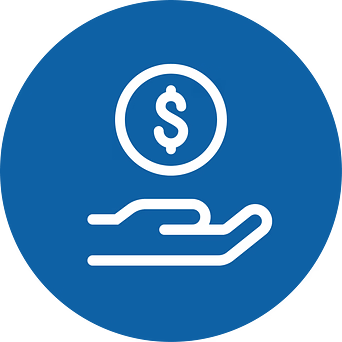All relationships begin with a promise. Whether it’s stated or not, that first exchange establishes the groundwork for what’s to follow. It’s true for all relationships, both private and professional. The nature of this promise may differ slightly, but its purpose is the same. It starts the process of establishing the deep trust necessary to maintain and nurture the relationship. In a professional environment, this leads directly to a higher CSI (customer satisfaction index) a higher NPS (net promoter score) and ultimately the culmination of the promise: customer retention.
In the collision industry, there are two key factors that will affect both of these metrics. The first is the actual cycle time; the time that elapses from the customer dropping off their vehicle to pick up. The second and arguably more important factor is the promise date. Was the vehicle ready on the first date promised, or was that date changed? If so, how many times? The key to determining what impact one factor has upon the other is through the interpretation of available analytics derived solely from customer responses. Some of the correlations I found while sifting through data backed up my initial hypothesis, but there were a few data points that surprised me. These required further study and analysis, and what I found may surprise you, too.
Properly calculating and interpreting correlative information requires a large data set. If your collected data is too small, you risk getting inaccurate results. Also required is data from a diverse geographical area. Regional data would prove much less useful, or at least cumbersome to sort through by county or state. I also needed the data collected across a span of time that allows for a showing of trends across months and years. Thankfully with over four million pieces of data collected over seven years across the US, I had everything I needed at my fingertips to back up my conclusions with concrete information.
Some of the questions I had were simple. Is there a link between the promised date and CSI? What happens to this number when that date is changed? How many times can this date be changed before a major drop is inevitable? That led to comparing these results against the baseline CSI when looking at the duration of time from drop off to pick up in days. Analyzing this led to more complicated questions, though. How important is the accuracy of the promise date given to the customer when put into statistical terms? Finally, what is the optimal amount of time that should be taken while determining the promised date?
What I concluded brought everything concentrically back to a single point: from the perspective of the customer, there are only a few variables that affect overall satisfaction. The first is the customer’s confidence in the diagnosis. If too much time is taken between dropping off the keys and the promised date being established, of course, the customer will experience some dissatisfaction. On the other hand, there is a noticeable dip when too little time is taken in the process as well. If disassembly and diagnosis are done on the same day as the promised date is given, customers experience trepidation based on their belief that your shop didn’t take the time to properly assess the situation. Across the board, it’s better to take a day to give a promised date. It’ll not only be more true to the actual pick-up date, but it also makes the customer feel more confident in your shop’s ability to diagnose.
The second major detractor from CSI is adherence to the promised date. Once it’s been established, you must do everything possible to ensure that the date is kept. From the information extrapolated from the available data, most customers understand that unforeseen circumstances occur. Their patience has a limit, though. While the highest CSI is encountered with one hundred percent accuracy between actual promised dates and the date of pick up, the most significant drop in CSI occurs between one and two days gap between them. This means that if the customer receives their vehicle one day after the promised date, there will be a drop in CSI, but if it goes over by two days, the drop becomes far more significant. This also applies to adjustments made to the promised date. If you have to call the customer and change the promised date once, yes, you’ll see a drop in CSI. If you have to do it twice, though, the customer becomes far more agitated, and the data shows that a much larger drop is encountered.
All of this circles a few simple points. Take your time in diagnosis. Over the course of the repair, the customer would prefer an accurate promised date over a speedy analysis. Once you’ve established the promised date, stick with it as closely as possible. Every deviation from this date damages the relationship between your shop and your customer. The last takeaway I found was this: Your customers need to be kept in the loop. One in three reviews analyzed mentioned communication. It demonstrates the importance of keeping our customers informed with updates and changes, and in some cases can mitigate the damage to the CSI by letting them know early if there are any complications. By keeping these customer-centric principles in mind, we can continue to determine how best to acquire new customers and retain those with which we have already established a relationship.
ABOUT UPDATEPROMISE:
At UpdatePromise, our mission is clear and simple. We want to positively impact millions of consumer lives, one industry at a time, by automating processes that enable businesses and their employees to communicate with their customers in an extraordinary way. Take our website for a test drive at https://www.updatepromise.com/.

 Harmony AI
Harmony AI Intelligent Appointments
Intelligent Appointments Tablet Vehicle Check-In
Tablet Vehicle Check-In Digital MPI
Digital MPI UpdatePromise App
UpdatePromise App AI-Driven Status Updates
AI-Driven Status Updates Dashboard Analytics
Dashboard Analytics AutoRepair-Review.com
AutoRepair-Review.com Full Merchant Services
Full Merchant Services Clover & Payment Devices
Clover & Payment Devices SmartPath Service
SmartPath Service MONOGRAM Service
MONOGRAM Service Honda
Honda Acura
Acura Audi
Audi Hyundai + Genesis
Hyundai + Genesis Sunbit
Sunbit All Features
All Features

